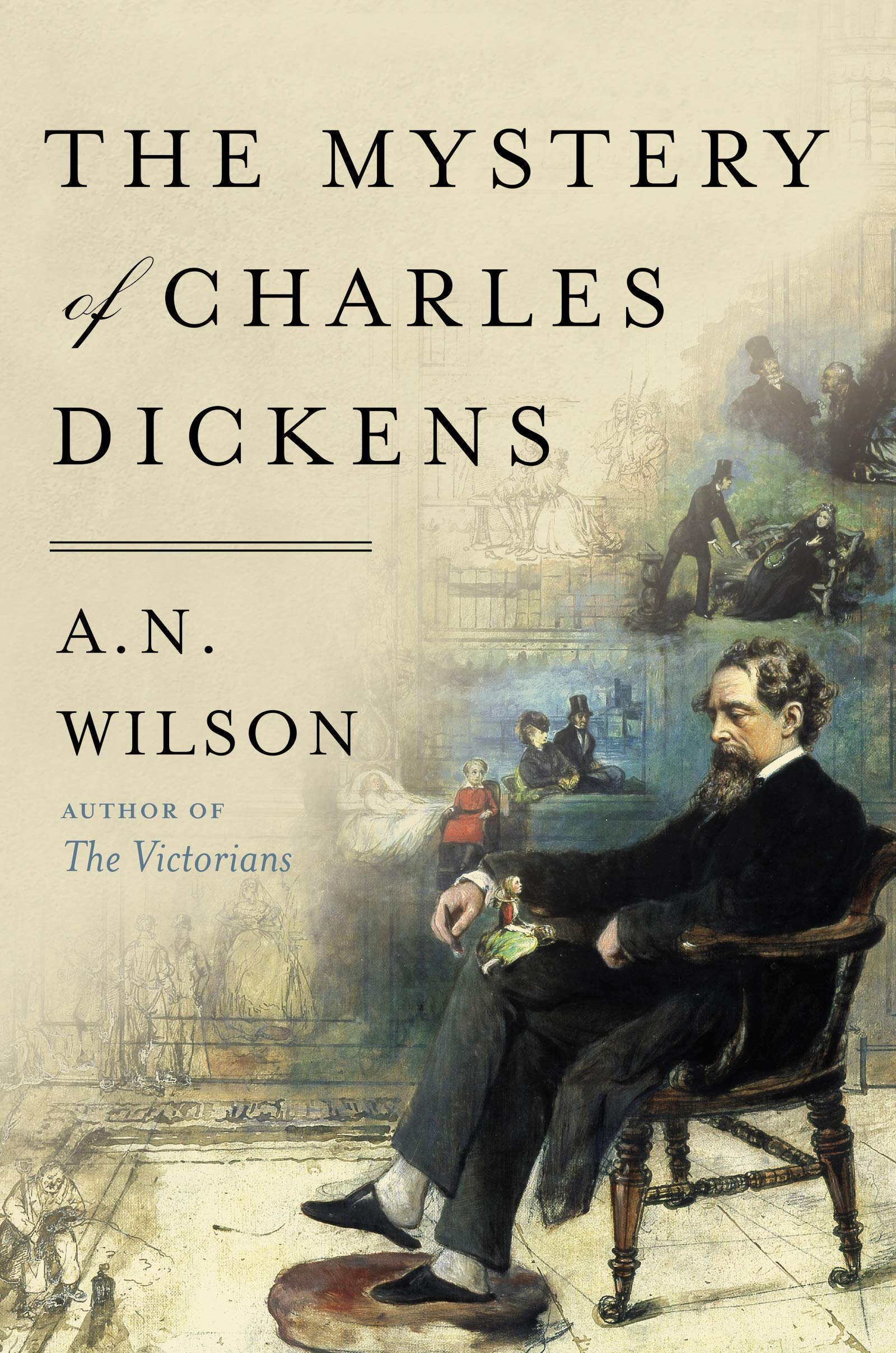The Mystery of Charles Dickens by A.N. Wilson
/The Mystery of Charles Dickens
By A. N. Wilson
HarperCollins, 2020
To mark the 150th anniversary of the death of Charles Dickens, Westminster Abbey projected an image of the famous author on its iconic towers. An academic conference was convened virtually on Zoom. The British Pobjoy Mint created a sterling silver coin in Dickens’s honor. And a knock-off Lego imitator has released a set of little plastic bricks showing Ebenezer Scrooge having Christmas dinner with Tiny Tim. Dickens readers from around the globe are celebrating the beloved Victorian author of more than a dozen major novels--books full of quirky characters, sentimental melodrama, and tenderhearted social critique.
In contrast, A. N. Wilson turns his attention in The Mystery of Charles Dickens to far darker elements in the author’s life--including the fact that soon after he began an affair with his teenaged lover Nelly Ternan, Dickens exiled his wife from their home, tried to declare her insane and have her institutionalized, and supposedly forbade his children from seeing their mother. Although other biographers have investigated these stories before, Wilson emphasizes how these expressions of the author’s “divided self” and “sick soul” were directly reflected in his characters and novels.
Wilson structures this atypical biographical study around a series of unresolved mysteries concerning the life of Charles Dickens. The first chapter begins with Wilson considering the fact that Dickens cashed a check the day before his death but only a portion of it can be accounted for. What happened to the nearly sixteen pounds left? The biographer speculates that Dickens gave the money to his mistress. This small mystery allows Wilson to discuss larger themes of the novelist’s relationship with young Nelly Ternan as well as the circumstances of his death. Other mysteries discussed in the biography include how the philanthropic “apostle of kindness” could also have been “so furiously unkind, so vindictively, pointedly and quite unnecessarily cruel” to his wife—in a chapter that examines the contours of his marriage more than it tries to consider that particular mystery.
Wilson argues that Dickens’s ornate plots and peculiar characters “had not come from a calm, happy place” but instead were born forth “from a cauldron of self-contradiction and self-reproach, a bubbling confusion of moral centres.” This exploration of “inner psychological destiny” is at the core of Wilson’s analysis. Often, Wilson uses well-known facts about Dickens’s life to help illuminate particular storylines from the novels. At other times, his speculations about the connections between life and art seem farfetched. Occasionally, Wilson uses particular characters or plotlines from the novels as evidence for what must have happened in Dickens’s life. For example, the biographer reads the frequent presence of inadequate mothers in the novels as evidence that Charles despised his mother Elizabeth Dickens, blaming her entirely for his difficult childhood. Perhaps Wilson is correct, but this kind of argumentation based upon instinct is neither elegant nor persuasive.
Using only the fact that Dickens fathered at least ten children as evidence, Wilson claims throughout the book that Dickens was “a highly sexed man” who brought “exuberant hyper-energy” to his erotic life. Wilson sometimes considers these biographical suppositions in a memoir-like tone: “The fantasy question would flit in and out of my brain: what would it have been like to teach Nelly?” he writes. “Would I have fallen secretly in love with her, as Dickens had, or would she have been one of the pleasant, hard-working majority whose names and personalities one forgot the next year when a new batch of students arrived?”
Many of Dickens’s early female characters seem to be “sentimental, sexless heroines,” but Wilson argues that in the novelist’s later work, Dickens approached “the subject that so concerned him”—sex—with an abundance of “subliminal violence.” Wilson believes that rather than emerging from a “fantasy world of toy doll women” (common in his earlier works), Dickens in the later novels was inspired by “the real world of sexual life” complete with “frenzied sexual jealousy.” He claims that the “demonic, cruel side of Dickens’s own nature” grew from the novelist’s “own possessive sexual fantasies about his much younger mistress, Nelly.”
The Mystery of A. N. Wilson is why the author seems obsessed with ideas about Charles Dickens’ sex life. Early in the biography, Wilson writes that as a child he “read and reread Dickens with obsessive rapture.” The books offered him “what felt like salvation.” It is not until the final chapter that he explains what he means by that statement. The Mystery of Charles Dickens takes another turn towards memoir as Wilson tells us about the punishments he experienced as a young boy in boarding school: violent beatings “by a headmaster who was visibly masturbating, usually inside his trousers, but not always inside, as he did it.” This explicitly-sexual cruelty, as well as other kinds of sadistic punishment, led Wilson to embrace Dickens. Within the novels he found comedy that provided the same catharsis that tragedy can give: “Katharis through tears, but not through tears alone: that was what Dickens offered.” Although Wilson’s admission is touching in its own way, the reader is left thinking that this biography has more to say about what Wilson took from Dickens’s novels than it does about whatever biographical reflections Dickens put in them.
—Hannah Joyner is an independent scholar living in Washington, D.C. Her work includes Unspeakable: The Story of Junius Wilson (with Susan Burch) and From Pity to Pride: Growing Up Deaf in the Old South. You can find her on BookTube at https://www.youtube.com/c/HannahsBooks.
